Review: Special Hobby 1/48 Fairey Albacore Mk.II
The Aircraft:
The origins of the Albacore, popularly known as the "Applecore", originated in Air Ministry Specification S.41/36 issued on 11 February 1937, as well as the earlier Specification M.7/36, which had sought a three-seat TSR (torpedo/spotter/reconnaissance) aircraft to replace the Fairey Swordfish in Fleet Air Arm service. It was to be capable of speeds between 58 and 183 knots while carrying a single 18-inch Mark XIIA torpedo. It was also to be fitted with dual flight controls, have a powered rear turret, comprehensive facilities for observation and navigation, and incorporate soundproofing and heating measures. In the end, none of these items would be found in an operational Albacore past the torpedo as the main weapon.
Fairey Aviation responded with several proposals. Early development included wind tunnel testing of various biplane models at RAE Farnborough between November 1936 and June 1937, which influenced the fitting of flaps. Fairey produced both biplane and monoplane configurations to fulfil the requirement; the monoplane proposal was dismissed since it raised uncertainties regarding the assigned role. Fairey focused its efforts on a biplane.
The final design of the Albacore, otherwise designated TBR (torpedo/bomber/reconnaissance), was a single-bay all-metal biplane. The fuselage was semi-monocoque, equipped with a split undercarriage. As compared to the Swordfish, the Albacore was had a more powerful engine driving a constant-speed propeller. The engine fitted to the Mk. I was the Bristol Taurus II radial engine with 1,065 hp; that fitted to the Mk.II was the more powerful Taurus XII with 1,130 hp. The Albacore provided crew amenities with a fully enclosed cockpit, a central heating system, a windscreen wiper for the pilot, and a lavatory. Armament was a single fixed forward-firing machine gun in the upper starboard wing, while the rear cockpit had either a single or twin Vickers K machine gun, manually deployed. The maximum under-wing bomb load was four 500 lb bombs.
The fabric-covered wings were of equal span and folded for more compact stowage onboard aircraft carriers. They featured relatively large hydraulically-actuated flaps that could also act as air brakes during dives. The Albacore was capable of diving at speeds of up to 215 knots. According to Eric Brown, the Albacore was relatively steady throughout the dive, while recovery was smooth and relatively easy to perform.
Tthe first of two prototypes performed its first flight on 12 December 1938, flown by F. H. Dixon. The second prototype first flew in April 1939. Both prototypes were the first two of a production run of 100 aircraft. The first prototype was later outfitted with floats and experimentally configured for catapult-assisted takeoffs. Testing in early 1940 revealed ts water-handling was poor, though it retained acceptable airborne characteristics.
Quantity production of the first 98 aircraft commenced in 1939, delayed because of production slippages of the Taurus engine. Testing of the Albacore and Taurus II engine commenced during February 1940 at RAF Boscombe Down. The prototype had a maximum speed of 160 mph at an altitude of 4,800 ft, at overall weight of 11,570 lb while carrying four depth charges; maximum speed without the depth charges was 172 mph. Minor criticisms of the Albacore came during its 1940 evaluation flights; issues included excessive heat of the forward cockpit in the summer, while the rear cockpit was cold and subject to persistent drafts. Stall characteristics were described as “uncomfortable,” while crew boarding was somewhat hazardous. The only notable change in the specification was replacement of the Taurus II with the improved Taurus XII.
800 Albacores were built, all manufactured at Fairey's Hayes factory. Production ended in 1943.
No. 826 Naval Air Squadron was specially formed to operate the first Albacores in March 1940; within weeks, the Albacore was attacking enemy-held harbors and shipping in the English Channel, operating from shore bases, as well as providing convoy escort for the rest of 1940.
HMS Formidable's 826 and 829 Squadrons were first to operate Albacores from an aircraft carrier, commencing in November 1940. The Albacore remained less popular than the Swordfish, being less maneuverable, with the controls considered to be too heavy for a pilot to perform much evasive action after dropping a torpedo.
15 first-line FAA squadrons equipped with the Albacore operating widely in the Mediterranean. In March 1941, Albacores inflicting heavy damage with torpedos on the Italian battleship Vittorio Veneto during the Battle of Cape Matapan,. Albacores also played a prominent role in the ill-fated raid on Kirkenes and Petsamo during July 1941. Albacores also successfully participated in the fighting at El Alamein, highlighting German positions using air-dropped flares to assist RAF night bombers. Between September 1941 and June 1943, 828 Squadron - based at RAF Hal Far, Malta - operated a squadron of Albacores during the Siege of Malta, using mines and bombs to attack Italian shipping, including convoys, along with shore targets in Sicily, mainland Italy, and North Africa. Albacores supported the landings at Sicily and Salerno, raiding key enemy facilities such as airfields and forts at night.
On 9 March 1942, 12 Albacores from HMS Victorious attacked the German battleship Tirpitz at sea near Narvik.Albacores from 817 and 832 Squadrons launched torpedoes, one of which came within 20 yards of Tirpitz. The attack was a failure, losing two aircraft.
During 1943, the Albacore was progressively replaced by the newer Barracuda. 841 Squadron, the final FAA Albacore squadron, had flown shore-based attacks against shipping in the English Channel since 1941; it was disbanded in late 1943.
The RAF had five Albacores with 36 Squadron at Singapore to supplement its Vickers Vildebeests; the remnants of the squadron were captured by the Japanese in March 1942. During 1943, 415 Squadron RCAF equipped with Albacores before they reformed as 119 Squadron at RAF Manston in July 1944. The squadron deployed to Belgium to combat German mini-submarines attacking Allied shipping entering the River Scheldt on its way to Antwerp.
The Kit:
The Albacore Mk.I was released in 2007, with the Mk. II released in 2008. Trumpeter released an Albacore a few years back, which is generally considered deficient in detail compared with the far more accurate Special Hobby kit, surprise suprise.
The kit is now available from eBay dealers at prices ranging from $30-$60.
Construction of this particular kit began in 2008, was consigned to the Box O' Doom in 208, survived the move to the current Chateau du Chat in 2015, and was rediscovered in 2023 while cleaning out the house following my wife's death.
Construction:
Construction is typical Special Hobby for the period, still largely limited-run kits.
The cockpit comes with resin parts and makes up reasonably well. The canopy is thick, so the only part that successfully opens up is the gunner's canopy, which is separate.
The kit ended up in the Box O'Doom when it was discovered, on assembling the model, that the interplane struts are about 1/8 inch too short, resulting in the upper wing not having the correct dihedral. The other Albacore reviewed here by Patrick Barratt, has the same problem, so it is inherent in the kit design. The Trumpeter kit does get the struts right
The kit does not include any ordnance.
Painting:
I decided to do an Albacore stationed on Malta, which meant giving it the standard FAA camouflage with Dark Sea Grey and Slate Grey (mixed from TamiyaKhaki and RLM02), with the lower surfaces painted Night (black).
Decals:
The kit decals went on without problem.
Final Finish:
I rigged the model with 0.33mm Nickel Silver Rod.
Overall:
The Special Hobby kit has more detail than the Trumpeter kit, though the Trumpeter kit has more accurate overall alignment, as well as providing a torpedo. If a modeler constructs the right size interplane struts, this saves the Special Hobby kit.
Recommended for Fleet Air Arm fans and fans of ugly British biplanes.
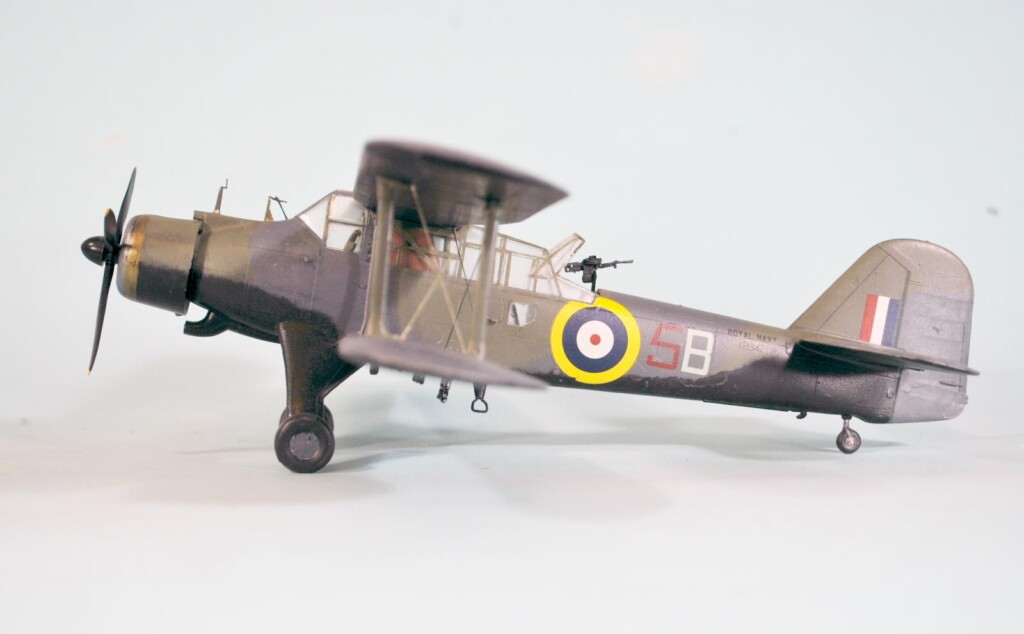
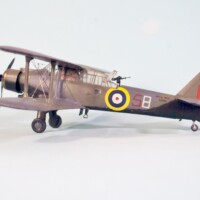
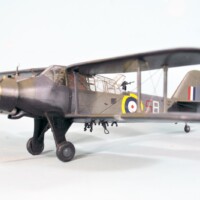
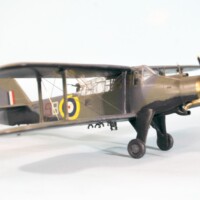

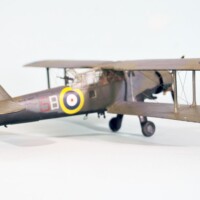
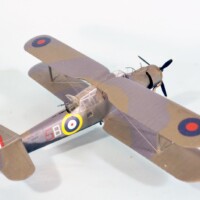
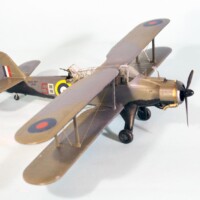
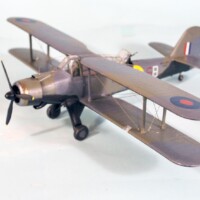
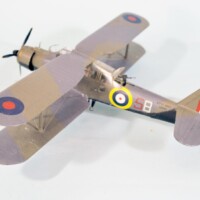
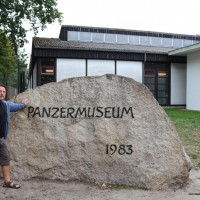
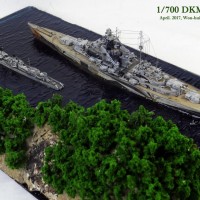
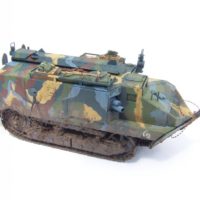
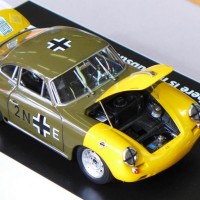
Good job, always liked the old Applecore, but never built one.
Just to mention, my LHS has a stack of 6 (SIX) of these on his shelf, so if anybody really needs one...
You should get one. Just be sure to assemble the wings with the proper dihedral.
Excellent work and nicely detailed history - it was a design responsible for the Swordfish staying in service.
The reason the Swordfish remained in service was because no other airplane could get off of and back on the small MAC escort carriers they operated from. There were several arctic convoys where the CVEs with Avengers couldn't fly, while the other CVEs with Swordfih operated every day.
Exactly
Good save Tom. This aircraft deserves to be built and I would like to see a different major kit maker do a buildable version
If you get the wing dihedral right, this is very buildable.
Excellent job on the challenging SH kit, Tom! Excellent article, as well!
A “lavatory”?
Trumpeter holds the record for most new kits that have failed to replace a model already in my collection. The Sparviero, Whirlwind and Albacore just don’t look as good as the CAs and SH, respectively.
I did buy their new Fulmar, which comes close, even though the canopies are bungled.
Speaking of the Sparviero, I just got a review copy of the Eduard re-pop of the Classic Air Frames kit. "Re-pop" is wrong; the proper term is "re-make." The plastic parts are all done with Eduard high-quality plastic. No short-shots, no warped parts, all great. Also the resin parts are cast with Eduard resin and look very sharp; they even added what I think are some new parts. The torpedo is great, and they offer a resin aftermarket set with two. Decals are super. Markings for six airplanes, including Buscaglia's Aerosiluranti, a Spanish Civil War version, and four other different markings with different camouflage. The kit with all these improvements is worth every penny they're charging. I'm going to set up a WIP page tomorrow.
It’s good to see the Czech crew getting use out of the CA mold acquisition. My model club buddies are excitedly expecting to see the Hudson rereleased. It’s sorely needed
Glad you were able to save this Albacore, Tom @tcinla
She looks really nice.
You don't see those Albacores being built that often.
It's reputation is it was a "loser" though the Italians and Germans on the ships the Malta Albacores sank might have a different opinion.
Another beautiful ugly plane, great model.
They can't all be pretty, but the Applecore rates up there on the ugly scale.
Doesn't take away what it did though.
Great build, Tom. I built that one about 15 years ago. I don't remember the strut issue, the big thing I remember is that top of the front canopy was cracked and I had to operate and make new parts, so I posed the canopy open.
1 attached image. Click to enlarge.
You obviously got the dihedral right - without being aware you had neatly sidestepped the secret hard thing that always lurks in a SH kit. 🙂
Count me in the category of lovin' ungly Brit designs (double or single wing!), so I really like this build - unusual subject. I think I'm going to commit a year to building the unsung heros, as you don't see them too often! Well done Tom - love it!